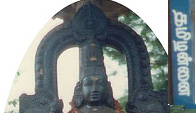
 |
||
| Home Grammar Lessons > Introduction I 1 2 3 4 5 6 II 1 2 3 4 5 6 III 1 2 3 4 5 6 IV 1 2 3 4 5 6 V 1 2 3 4 5 6 VI 1 2 3 4 5 6 Select Unit | ||
|
| ||
Making Interrogative Questions and Sandhi RulesThe interrogative marker ஆInterrogative questions, also called yes/no questions, are made in Tamil using the suffix ஆ. This suffix can be added to the end nouns, adjectives, adverbs, or verbs. For example, the noun பையன் when added with the suffix ஆ, as in பையனா?, it becomes a question. This can mean either 'is he a boy?' or 'are you asking about a boy?' etc., depending upon the context of the utterance. Thus, unlike in English where the interrogative questions are made by a change in word order between the auxiliary verb 'be' and the subject, the interrogative question in Tamil is made simply by adding the suffix ஆ at the end of words. Following are some of the other examples of Tamil interrogative expressions with examples from various parts of speech.
உங்கள் பெயர் கண்ணனா? (கண்ணன் + ஆ)
கண்ணன் உங்கள் பெயரா? (பெயர் + ஆ)
நான் உயரமா? நீங்கள் உயரமா? The suffix ஆ is added next to any word ending in consonant without any change in the word as in கண்ணனா, பெயரா,
உயரமா etc. However, when this suffix or
any other suffix that begins with a vowel is added to a word that ends in a
vowel a change in the word occurs - either by adding a glide, or removing
final vowel. The change that takes place in words during the
addition of suffixes is called sandhi change, and the rules
that govern each of such changes are called sandhi rules (See lesson 4).
|
|
© South Asia Language Resource Center (SALRC) |